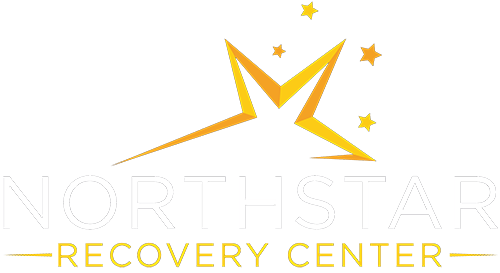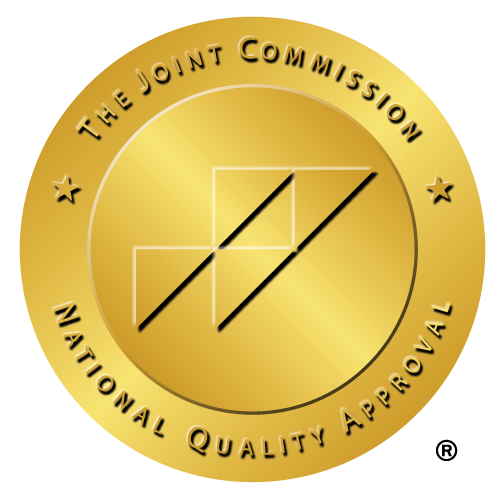Codependency and substance abuse are two complex and interconnected issues that can significantly impact individuals and their relationships. Both conditions can be challenging to identify and address, often leading to a vicious cycle of dysfunction and pain. In this blog, we will explore the concepts of codependency and substance abuse, the importance of understanding their connection, and how to recognize the signs of both issues in oneself or a loved one.
A Brief Explanation of Codependency and Substance Abuse
 Codependency is a term used to describe a type of relationship dynamic in which one person becomes excessively reliant on another for their emotional needs, validation, and self-worth. This unhealthy dependency can result in a pattern of enabling, control, and emotional manipulation, which can ultimately hinder personal growth and emotional well-being.
Codependency is a term used to describe a type of relationship dynamic in which one person becomes excessively reliant on another for their emotional needs, validation, and self-worth. This unhealthy dependency can result in a pattern of enabling, control, and emotional manipulation, which can ultimately hinder personal growth and emotional well-being.
Substance abuse, on the other hand, refers to the harmful or hazardous use of psychoactive substances, such as alcohol or drugs. This behavior can lead to addiction, a chronic and relapsing brain disorder characterized by compulsive drug seeking and use, despite harmful consequences to the individual and those around them.
The Importance of understanding the connection between the two
The connection between codependency and substance abuse is crucial to understand, as it can shed light on the underlying dynamics that contribute to both issues. In many cases, codependent relationships can perpetuate or exacerbate substance abuse, as the codependent individual may enable or support their partner’s addiction, either consciously or unconsciously. Conversely, substance abuse can foster codependency by creating an environment of emotional and financial dependence, manipulation, and control. By recognizing and addressing the connection between these two issues, individuals and their loved ones can work together to break the cycle and pave the way for a healthier, more balanced life.
We will delve deeper into the concepts of codependency and substance abuse, examining their defining characteristics and exploring the signs that may indicate their presence in a relationship. We will also discuss the connection between these two issues, looking at how they can feed into and perpetuate one another, making it difficult for individuals and their loved ones to break free from their destructive patterns. Finally, we will provide guidance on addressing codependency and substance abuse, emphasizing the importance of seeking professional help and establishing healthy boundaries and communication.
Defining Codependency and Substance Abuse
To fully understand the connection between codependency and substance abuse, it’s essential to define and recognize the characteristics of each issue.
Definition and characteristics of codependency
Codependency is a dysfunctional relationship pattern in which one person becomes overly reliant on another for their emotional needs, validation, and self-worth. Some common characteristics of codependent relationships include:
Emotional dependency: A strong need for approval, support, and validation from the other person, often to the point of neglecting one’s own emotional well-being.
Enabling behavior: Encouraging or allowing harmful behaviors, such as substance abuse, by making excuses, downplaying consequences, or providing financial support.
Lack of boundaries: Difficulty establishing and maintaining personal boundaries, often resulting in blurred lines between one’s own needs and those of the partner.
Low self-esteem: A persistent sense of inadequacy and low self-worth, often leading to a strong desire to be needed or appreciated by the other person.
Control and manipulation: Attempts to exert control over the other person’s actions or emotions, often through guilt, shame, or passive-aggressive behavior.
Definition and characteristics of substance abuse
Substance abuse refers to the harmful or hazardous use of psychoactive substances, such as alcohol or drugs, which can lead to addiction, a chronic and relapsing brain disorder characterized by compulsive drug seeking and use. Some common characteristics of substance abuse include:
Changes in behavior and appearance: Unusual mood swings, irritability, neglect of personal hygiene, or a shift in social circles.
Neglect of responsibilities: Failure to fulfill work, school, or family obligations due to substance use.
Increased tolerance and dependence: Needing more of the substance to achieve the desired effect or experiencing withdrawal symptoms when the substance is not used.
Withdrawal symptoms: Physical or emotional symptoms that occur when stopping or reducing substance use, such as anxiety, depression, nausea, or insomnia.
Continued use despite negative consequences: Persisting with substance use despite experiencing significant harm to one’s health, relationships, or other aspects of life.
The link between codependency and substance abuse
The connection between codependency and substance abuse lies in the way these two issues can fuel and perpetuate each other. Codependent relationships often provide a breeding ground for substance abuse, as the enabling behaviors and emotional dependence characteristic of these dynamics can encourage or support addiction. At the same time, substance abuse can foster codependency by creating an environment of emotional and financial dependence, manipulation, and control, making it difficult for both individuals to break free from their destructive patterns.
Signs of Codependency in Relationships
Recognizing the signs of codependency in relationships is a critical step towards understanding the connection between codependency and substance abuse. Some common signs of codependency in relationships include:
Emotional dependency
A strong need for approval, support, and validation from the other person, often to the point of neglecting one’s own emotional well-being. This can manifest as an excessive need for reassurance or a constant fear of abandonment.
Enabling behavior
Encouraging or allowing harmful behaviors, such as substance abuse, by making excuses, downplaying consequences, or providing financial support. This may involve covering for the other person’s mistakes, bailing them out of trouble, or taking on their responsibilities.
Lack of boundaries
Difficulty establishing and maintaining personal boundaries, often resulting in blurred lines between one’s own needs and those of the partner. This can include sacrificing one’s own well-being, interests, or values for the sake of the relationship.
Low self-esteem
A persistent sense of inadequacy and low self-worth, often leading to a strong desire to be needed or appreciated by the other person. This can result in feelings of guilt, shame, or a constant need for validation from others.
Control and manipulation
Attempts to exert control over the other person’s actions or emotions, often through guilt, shame, or passive-aggressive behavior. This may involve using emotional blackmail, playing the victim, or subtly manipulating situations to maintain the upper hand.
Signs of Substance Abuse
Recognizing the signs of substance abuse is equally important when exploring the connection between codependency and addiction. Common signs of substance abuse include:
Changes in behavior and appearance
Unusual mood swings, irritability, neglect of personal hygiene, or a shift in social circles may indicate substance abuse. These changes may be accompanied by secrecy, dishonesty, or defensiveness when confronted about the issue.
Neglect of responsibilities
Failure to fulfill work, school, or family obligations due to substance use may signal an underlying issue with addiction. This can include missing deadlines, poor performance, or frequent absences.
Increased tolerance and dependence
Needing more of the substance to achieve the desired effect or experiencing withdrawal symptoms when the substance is not used can be a sign of substance abuse. This can manifest as an increased need for the substance and difficulty functioning without it.
Withdrawal symptoms
Physical or emotional symptoms that occur when stopping or reducing substance use, such as anxiety, depression, nausea, or insomnia, may indicate a dependence on the substance.
Continued use despite negative consequences
Persisting with substance use despite experiencing significant harm to one’s health, relationships, or other aspects of life may be a sign of addiction. This can include continuing to use even when it leads to legal trouble, financial difficulties, or strained relationships.
By recognizing the signs of codependency and substance abuse in oneself or a loved one, it becomes possible to address the underlying issues and work towards healthier, more balanced relationships that support recovery and personal growth.
The Connection Between Codependency and Substance Abuse
The connection between codependency and substance abuse is complex and multifaceted, with each issue often serving to exacerbate the other. Understanding this connection is essential to effectively addressing both problems and promoting lasting recovery.
How codependency can contribute to substance abuse
Enabling and denial: Codependent individuals may inadvertently support their partner’s addiction by making excuses for their behavior, downplaying the consequences, or providing financial support. This enabling behavior can make it difficult for the addicted person to recognize the severity of their problem and seek help.
Emotional stress and triggers: The emotional dependency and manipulation common in codependent relationships can create a stressful environment that may trigger substance use as a coping mechanism. This can contribute to the development or worsening of an addiction.
Lack of support for recovery: Codependent individuals may struggle to provide the necessary support for their partner’s recovery due to their own emotional needs and dependency issues. This can make it challenging for the addicted person to maintain sobriety and establish healthier relationship dynamics.
How substance abuse can contribute to codependency
Emotional and financial dependence: Substance abuse can create a situation where the addicted person becomes increasingly reliant on their partner for emotional and financial support, leading to codependent dynamics.
Need for control and manipulation: As addiction progresses, the addicted person may resort to manipulation and control tactics to maintain their substance use, further entrenching codependent patterns in the relationship.
Caretaking and responsibility for the addicted person: The non-addicted partner in a codependent relationship may feel an overwhelming sense of responsibility for the addicted person’s well-being, further reinforcing the cycle of codependency.
Addressing Codependency and Substance Abuse
To break the cycle of codependency and substance abuse, it’s crucial to address both issues simultaneously. Some strategies for addressing codependency and substance abuse include:
A. The importance of addressing both issues simultaneously: Tackling codependency and substance abuse together increases the likelihood of successful recovery and the establishment of healthier relationship dynamics.
B. Seeking professional help for codependency and addiction treatment: Professional therapists, counselors, and support groups can provide valuable guidance and resources for individuals struggling with codependency and substance abuse. This may include individual therapy, couples counseling, or group therapy.
C. Establishing healthy boundaries and communication: Learning to set and maintain personal boundaries and communicate effectively can help individuals break free from codependent patterns and support their partner’s recovery.
D. Building a strong support network: Developing a support network of friends, family, and other individuals in recovery can provide encouragement, accountability, and understanding during the recovery process.
Recognizing the signs of codependency and substance abuse and understanding their connection is vital for individuals seeking healthier, more balanced lives. By addressing both issues simultaneously and seeking professional help, individuals and their loved ones can work together to break the cycle of codependency and addiction, paving the way for lasting recovery from drug and alcohol addiction and more fulfilling relationships.
Addressing codependency and substance abuse is a critical step in the journey toward lasting recovery and healthier relationships. Northstar Recovery Centers, with locations in Southborough and Springfield, MA, are committed to providing comprehensive, evidence-based treatment for individuals struggling with these intertwined issues. Our compassionate team of professionals is dedicated to helping you and your loved ones navigate the complex process of healing and growth. Don’t hesitate to take the first step towards a brighter future; contact Northstar Recovery Centers today and let us guide you on the path to a more balanced, fulfilling life.

